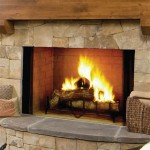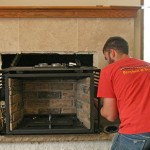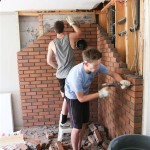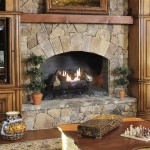Cost of Adding a Wood Burning Fireplace to an Existing Home
Adding a wood-burning fireplace to an existing home can significantly enhance its aesthetic appeal and create a cozy atmosphere. However, this substantial home improvement project involves numerous factors that influence the overall cost. Understanding these variables is crucial for homeowners contemplating this undertaking, allowing for accurate budgeting and informed decision-making.
The cost of installing a wood-burning fireplace can vary widely, ranging from a few thousand dollars to upwards of twenty thousand dollars or more. This significant price range stems from the complexity of the installation process, the type of fireplace chosen, the required structural modifications, and the geographic location of the project. This article will explore the key cost drivers associated with adding a wood-burning fireplace, providing a comprehensive overview to assist homeowners in estimating the potential investment.
Fireplace Type and Material Costs
The selection of the fireplace itself is a primary determinant of the overall cost. Wood-burning fireplaces are available in various styles and materials, each with a different price point. Prefabricated or zero-clearance fireplaces are generally more affordable than traditional masonry fireplaces built from scratch. Prefabricated units are manufactured in a factory and designed to be installed with minimal construction, reducing labor costs and time.
Masonry fireplaces, on the other hand, require extensive construction and are typically more expensive. They are built on-site using bricks, stones, or concrete blocks, offering a customized and aesthetically pleasing appearance. The cost of materials for a masonry fireplace can vary significantly depending on the type of stone or brick chosen, with natural stone being more expensive than manufactured brick.
Furthermore, the size and complexity of the fireplace design will impact the material costs. A larger fireplace with intricate detailing will require more materials and specialized labor, increasing the overall expense. The addition of features such as a raised hearth, custom mantel, or decorative firebox will also contribute to higher material costs.
The firebox itself, the area where the fire is built, can be constructed from various materials. Firebrick is a common choice due to its ability to withstand high temperatures. The quality and thickness of the firebrick can influence the cost. The chimney, which is crucial for venting smoke and combustion gases, also contributes significantly to the material costs. Chimneys can be constructed from various materials, including brick, stainless steel, and concrete. The height of the chimney will also affect the cost, as taller chimneys require more materials and labor.
Beyond the core fireplace structure, additional material costs may include flue liners, dampers, fire screens, and fireplace tools. These accessories enhance the functionality and safety of the fireplace and should be factored into the overall budget.
Installation and Labor Costs
Labor costs represent a significant portion of the total expense of adding a wood-burning fireplace. The installation process involves various skilled tradespeople, including masons, carpenters, plumbers (if gas lines are involved for a starter flame), and chimney specialists. The complexity of the installation and the geographic location of the project will influence the hourly rates and overall labor costs.
The installation of a prefabricated fireplace typically requires less labor than a masonry fireplace. Prefabricated units are designed for easier installation and often come with detailed instructions. However, even with a prefabricated unit, professional installation is recommended to ensure proper venting, safety, and compliance with local building codes.
Masonry fireplace installations require significant expertise and time. A skilled mason will need to construct the foundation, firebox, chimney, and hearth. This process can take several days or even weeks, depending on the size and complexity of the design. The labor costs for masonry work can be substantial, particularly if the design involves intricate detailing or custom stonework.
In addition to the fireplace construction itself, the installation process may involve structural modifications to the home. This could include reinforcing the floor to support the weight of the fireplace, framing a chase for the chimney, or altering existing walls or ceilings. These structural modifications will add to the labor costs and may require the involvement of a structural engineer.
Plumbing work may be necessary if a gas line is being installed to provide a gas starter for the wood fire. A licensed plumber will need to run the gas line from the main gas supply to the fireplace location and connect it to the gas starter unit. This work must be done according to local codes and regulations.
Chimney installation is another critical aspect of the project. The chimney must be properly sized and constructed to ensure adequate drafting and prevent dangerous carbon monoxide buildup. A chimney specialist will need to install the chimney, ensuring that it meets all safety requirements and local building codes. The cost of chimney installation will vary depending on the height of the chimney and the type of materials used.
Permits, Inspections, and Code Compliance
Obtaining the necessary permits and complying with local building codes is an essential aspect of adding a wood-burning fireplace. Building permits are required to ensure that the construction meets safety standards and that the fireplace is properly installed. The cost of building permits can vary depending on the location and the scope of the project.
Before starting the installation, it is crucial to contact the local building department to determine the specific permit requirements and applicable building codes. The building department may require detailed plans of the fireplace design and construction, as well as documentation of the materials being used.
Inspections are typically required at various stages of the installation process. These inspections are conducted by building officials to ensure that the work is being done according to code and that the fireplace is safe to use. Inspections may be required for the foundation, framing, chimney installation, and final completion.
Compliance with local building codes is essential to ensure the safety and functionality of the fireplace. Building codes address issues such as fire safety, structural integrity, and ventilation. Failure to comply with building codes can result in fines, delays, and even the requirement to dismantle and rebuild portions of the fireplace.
In addition to building codes, there may be specific regulations regarding wood-burning fireplaces in certain areas. These regulations may restrict the types of wood that can be burned, limit the hours during which fireplaces can be used, or require the installation of specific emission control devices. It is important to research and comply with these regulations to avoid fines and ensure responsible fireplace operation.
The cost of permits and inspections can range from a few hundred dollars to several thousand dollars, depending on the location and the complexity of the project. These costs should be factored into the overall budget to avoid unexpected expenses.
Beyond the core costs associated with the fireplace, homeowners should consider the potential for additional expenses. These may include the cost of site preparation, such as clearing vegetation or leveling the ground, as well as the cost of landscaping or other exterior improvements to complement the new fireplace. Interior finishing work, such as painting or drywall repair, may also be necessary to complete the project. Homeowners should also factor in the potential for cost overruns due to unforeseen problems, such as hidden structural issues or unexpected delays. A contingency fund of 10-15% is recommended to cover these unexpected expenses.
Adding a wood-burning fireplace to an existing home is a significant investment that can enhance the value and enjoyment of the property. By carefully considering all of the cost factors involved, homeowners can make informed decisions and ensure that the project is completed successfully and within budget.

What Does It Cost To Install A Fireplace Vs Wood Stove Stamford Fireplaces

Adding A Fireplace To Existing Home Where For Fireplaces

Fireplace Installation Cost 2024 Gas Wood Burning Electric

How Much Does Fireplace Installation Cost 2024 Data Angi

Estimated Page Fireplaces Stoves Inserts Wood Gas Pellet

Wood Burning Stove Installation Cost Direct Stoves
.aspx?strip=all)
Cost Of Operating A Wood Insert Cord Calculator Regency

Estimated Page Fireplaces Stoves Inserts Wood Gas Pellet

Log Burner Installation Cost In 2024 Checkatrade

Converting A Fireplace To Wood Burning Stove Chesneys
Related Posts








